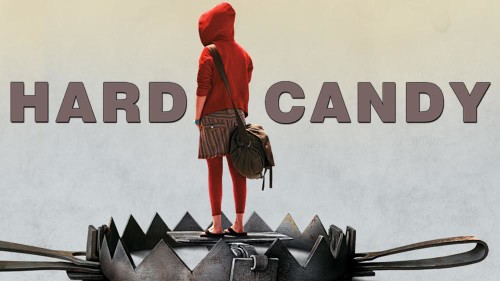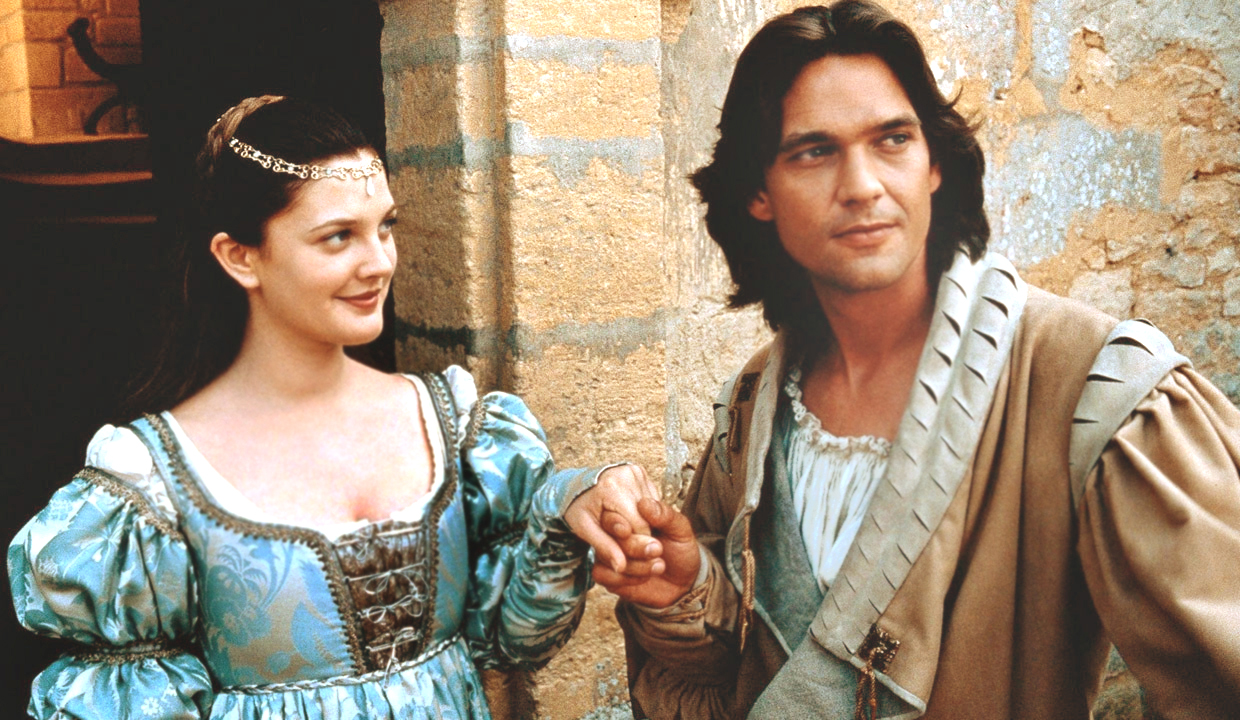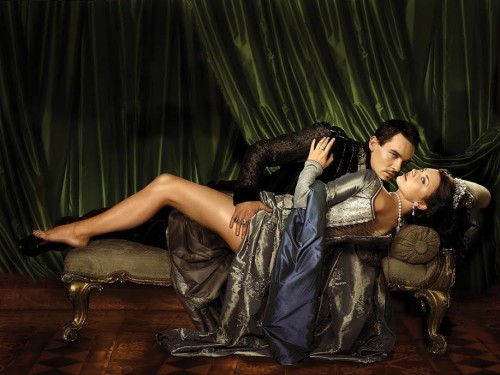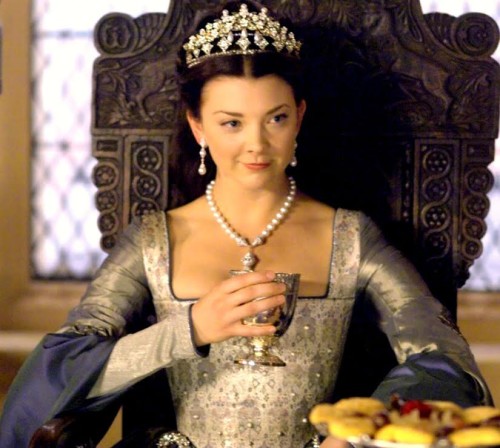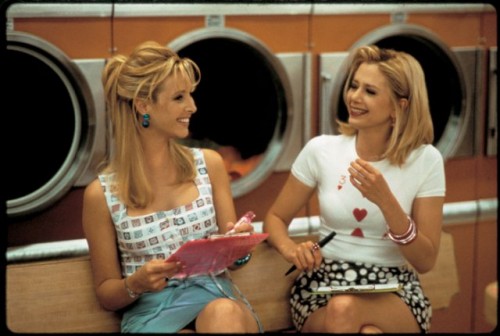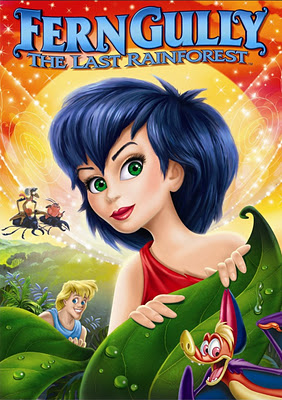This guest post by Emma Kat Richardson appears as part of our theme week on Violent Women.
Even around Halloween time, Hollywood doesn’t hand out movies like Hard Candy all that often. It’s a difficult morsel to swallow, and, despite the presence of adorably teenaged Ellen Page peering meekly from the cast list, not the slightest bit sugary – indeed, much of the exposition is skin-crawling enough to make the hardiest of trick-or-treaters lose their appetites. And yet, beneath its decidedly gruff exterior (understatement of the year, perhaps?) lies the timeless tale of a boy and a girl. But in this case, he’s a man merely masquerading as a responsible adult, and she’s a girl wearing the wiles of a woman in order to achieve a purpose much more sinister than the initial set up would lead one to believe.
Just five minutes into the film, and you’d think it was easy to ascertain the obvious villain: Patrick Wilson, playing a 30-something photographer named Jeff, seduces Page’s 14-year-old Hayley Stark through an online chat window, with the practiced precision of a well-equipped Internet predator. The two agree to meet at a coffee shop, where awkward flirtations quickly lead them back to Jeff’s house. Feeling sick to your stomach yet? You should be, but not because Hayley is dangling on the precipice of statistical tragedy. No, she’s far from being some helpless victim, as Jeff quickly learns when he finds himself waking up in a state of confusion, limbs bound to an office chair as Hayley gleefully rummages through his drawers and cabinets. “You know how they tell us pretty young things not to drink anything we haven’t mixed ourselves? That’s good advice…. for anyone.” Touche. Seems like the only thing more humiliating that being exposed as a pedophile is to be outwitted by the expected target of one’s predatory efforts. Hogtying and drugging Jeff is only the tip of Hayley’s sadistic iceberg: over the course of the next several hours, she subjects him to a series of tortures more at home in Guantanamo Bay than a sleepy suburban neighborhood, including spraying his screaming mouth with chemicals, temporarily suffocating him with cellophane, and attacking him with a taser in the shower.
May December, or murder and dismember?
But Hayley’s plan isn’t merely to make Jeff suffer the consequences of what he might have intended for her. She’s on a mission to find out what happened to Donna Mauer, a local teenager who’s gone missing. Did Jeff have something to do with it? He lives in a house decorated with near-naked pictures pubescent models; he brought Hayley back home and let her drink copious amounts of alcohol while stripping. Most tellingly of all, he has a picture of Donna locked away in a hidden safe, beneath a decorative living room rock garden. Poor Donna likely fell into a trap from which very few victims of sexual violence manage to emerge unscathed, and Hayley is determined to see that justice is served, no matter what lengths she’s forced to go to in Jeff’s kidnapping and torture.
And speaking of torture, do we need to get into detail about the castration scene? Yup, Hayley is so committed to defanging this predator (to use a rather pointed analogy) that she rigs up a makeshift operating table, lashes an unconscious Jeff down to it, and proceeds to undergo such a wicked game of psychological fuckery, it’s hard to know who to keep rooting for. The scene itself is exquisitely shot – all agonizing closeups and angles designed to elicit maximum proxy discomfort. The dialogue exchanged between the two principle actors is a mastery in cat and mouse tension; best of all is when Hayley draws a brilliant comparison between Jeff’s forthcoming mutilation and the anguish suffered by the victims of rape and abuse on a daily basis. Do your friends know? Do your neighbors know? Who can tell just by looking at you that you’ve been subjected to the most vile sort of personal attack?
Should have just signed up for Ashley Madison.
It’s perhaps this sentiment that best exemplifies what sets Hayley’s violent tactics apart from the intent of her would-be attacker. While it’s safe to say her methods are probably too extreme for the To Catch a Predator crowd, her purpose is – on paper, at least – a noble one. You get the sense that she’s adequately prepared for taking down every neighborhood scumbag that slimes his way into her chatroom; there’s more than subtle indication that she’s done all of this before. For a kid not even in high school yet, she sure knows her way around a taser. It’s disturbing, but in a way that renders the viewer in a challenging state of narrative confusion. Indeed, one of very best elements to Hard Candy is that the primary action sequences make it almost impossible to sympathize with one protagonist over another. Even the most strident of feminists probably can’t help but shudder at Jeff’s predicament – sure, he seems to be a major sleeze-ball, but does Hayley really have to go to these lengths just to make him pay for crimes she can’t confirm that he committed?
In the end, one is forced to conclude that Hard Candy is no easy cinematic meal to digest. It’s a gripping, challenging, often-exceedingly painful film to take in. But like Hayley herself, the movie’s genius lies in its ability to construct so much thought-provoking narrative with so little in the way of material tools. Shot for less than a million dollars, the sets are simple, the cast consists mainly of just Page and Wilson (Sandra Oh, who gets top billing alongside the two principle actors, appears in just one fleeting scene). It’s rare to see a story accomplish such a lasting impression with a decidedly minimalist approach. Page’s performance is a hurricane of emotions; she’s the perfect foil to Wilson’s doughy and desperate Jeff, who probably wished he’d kept his freaky tendencies limited to just porn. If Hayley Stark is a prime example of a violent woman, than she represents the very strongest in lashing out to evade victimhood. She is the anger that lives inside us all when we are harmed or abused. As she declares to a defeated Jeff in the film’s climactic scene: “I am every little girl you ever watched, touched, hurt, screwed, killed.”
Emma Kat Richardson is a Detroit native and freelance writer living in Austin, Texas. Her work has appeared in xoJane.com, Bitch, Alternative Press, LaughSpin.com, Real Detroit Weekly, 944, and Bust.com. She’s enough of a comedy nerd and cat lady to have named her Maine Coon Michael Ian Cat. Follow her on twitter: @emmakat.
